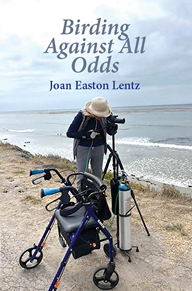I have been following several news reports about signs that El Niño conditions may be building in waters off South America.
As you may recall from the chapter on weather in my recent book, ENSO events (El Niño/Southern Oscillation as they are properly called) originate in the tropical eastern Pacific off Peru. Eventually, they may affect our weather in the Northern Hemisphere.
The normally cold, plankton-rich Humboldt current is the southern counterpart to our cold California current. These waters produce important bait fish for foraging seabirds.
Off our coast, these schooling fish are Northern Anchovies or Pacific Sardines.
Off the Peruvian coast, the feeder fish are Peruvian Anchoveta (a type of anchovy) and the South American Pilchard ( a species of sardine).
When the sea surface temperatures warm up in the Humboldt current, because of the complicated wind and water conditions associated with ENSO, these feeder fish will disappear seeking colder waters.
If an El Niño is on the way, seabird populations may be the first to suffer.
Alvaro Jaramillo, a top California birder and tour guide (alvaro@alvarosadventures.com), has posted news to CALBIRDS – a listserve to which I belong — of a massive die off of several species of seabirds off the central South American coast from the Galapagos to northern Chile. Guanay Cormorant and Peruvian Booby appear to be the main victims, and they’re dying of starvation. Presumably, the sardines and anchovies have departed to colder waters.
In turn, seabirds will move away from tropical waters –both to the north and south—looking for prey.
Sightings of Craveri’s Murrelets and Masked Boobies, both southerly species, have been recorded off the coast at San Diego in the past few weeks.
Consider the most recent update by the NOAA Climate Prediction Center for June 30 2014. Go to http://www.cpc.ncep.noaa.gov/products/analysis_monitoring/lanina/enso_evolution-status-fcsts-web.pdf
In the Summary section of the ENSO Status above, NOAA cites the following:
– Sea surface temperatures are above-average across the equatorial Pacific Ocean.
– Chance of El Niño is 70% during the Northern Hemisphere summer and reaches 80% during fall and winter.
On the other hand, follow this link http://youtu.be/ihEhJdCPZ78 to watch an interesting video on YouTube that suggests current El Nino conditions to the south may fizzle before fall and winter.
Be warned: Southern California weather forecasters are the first to admit that our weather is unpredictable!
And for what it’s worth, local ocean swimmers report unusually warm water temperatures off Santa Barbara for this early in the summer .
Stay tuned for further news!

